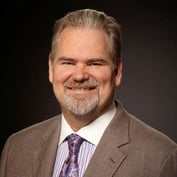(Bloomberg) — Constantine Kortesis says he can sense the odds of finding work at his age are against him.
“I’ve gotten to the point where I know it’s just a waste of time” to apply for jobs, said Kortesis, 61. “Once you get past 50 years old, nobody really wants to talk to you.”
The former senior engineering project manager at Electronic Data Systems Corp. near Detroit says he was let go more than five years ago in a round of mass firings after the company was acquired by Hewlett-Packard Co. The certified manufacturing engineer is looking for steady employment that’s yet to materialize, and now he’s counting the days until he can apply for Social Security.
Since 1980, just 20 percent of 55-to-59 year-olds who leave the workforce during economic slumps or in early stages of recoveries are employed again within four years, according to a study by Federal Reserve Bank of Boston economists Daniel Cooper and Maria Jose Luengo-Prado published last month.
Re-entry improves the younger the worker, with the share climbing to 41 percent of 45-to-54 year-olds and 78 percent of 25-to-44 year-olds, according to their research.
Kortesis personifies the gray area between the so-called cyclical component of the drop in workforce participation during this economic expansion, which can be influenced by the strength of the recovery, and irreversible structural elements such as an aging population.
Fed policy
Weighing the balance is a critical issue for Fed officials as they gauge labor-market strength for signs that it’s safe to raise the benchmark rate for the first time since 2006. The Boston Fed findings illustrate just how difficult it will be for monetary policy to pull older Americans, who make up a large share of the long-term unemployed, back into the workforce.
“You’re not going to get a bounce-back of the baby boomers suddenly getting younger,” said Jim Stock, an economics professor at Harvard University, referring to the generation born between 1946 and 1964. “There’s this vague line between structural and cyclical,” he said. Figuring out where it lies “is actually quite important for the Fed because it gives an indication of how far the labor market is from recovery.”
About 40 percent of unemployed Americans 55 to 64 years old had been jobless for 27 weeks or more in August, according to Labor Department data. That’s higher than any other group except for those 65 and older.
Meanwhile, almost 30 percent of jobless workers 25 to 34 years old were long-term unemployed. Because younger workers are less likely to drop out of the labor force for reasons such as disability or retirement, they have a higher probability of being pulled back in, said Dana Saporta, U.S. economist at Credit Suisse Securities USA in New York.
Participation drops
From the fourth quarter of 2007 as the recession was about to start through this year’s second quarter, the labor force participation rate — or the share of the working-age population with a job or looking for one — declined by 3.1 percentage points to 62.8 percent, the lowest since 1978.
The drop in participation has helped cut unemployment more than projected by Fed policy makers. The jobless rate was 6.1 percent in August, down from 7.2 percent in the same month last year. In order to be considered unemployed, a worker has to be actively looking for a job.
Retiring baby boomers account for 1.3 percentage points of a 2.8 point decline in participation since the end of 2007 through this year’s second quarter as calculated in research by Fed economists. They adjusted the gauge for population shifts and a redesign of the government survey, and the results were published by the Washington-based Brookings Institute this month. Such demographics will continue to weigh on the rate going forward, they found.
Cyclical impact
Anywhere from 0.25 percentage point to 1 percentage point of the decline in participation is attributable to the effects of a weak recovery and labor market, the Fed economists found.
Central bankers can influence how much of this slack is erased by keeping interest rates low to boost growth, whereas there is little they can do about more permanent shifts in the workforce. New York Fed President William C. Dudley this week said he favors letting the economy run “a little hot” by allowing the unemployment rate to fall a little below what central bankers considers optimal.
The Fed is carefully monitoring the labor market and any remaining slack as it winds down an unprecedented monetary stimulus aimed at lifting the economy out of the worst recession in the post-World War II era.








 September 29, 2014 at 08:13 AM
September 29, 2014 at 08:13 AM










